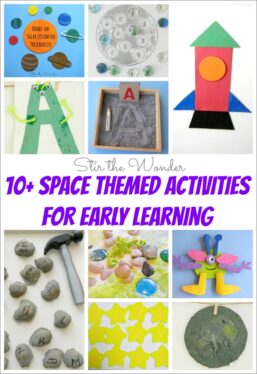Educational Activities in Space

NASA
Science in Space: September 2024
As students of all ages returned to school this month, crew members on the International Space Station continue to conduct a variety of educational programs and activities that support learning on the ground. These efforts are part of a wider commitment at NASA to engage, inspire, and attract future generations of explorers and to build a diverse future workforce equipped with skills in science, technology, engineering, and mathematics (STEM).
One current activity is Robo-Pro Challenge 5, an educational program hosted by JAXA (Japan Aerospace Exploration Agency) in cooperation with NASA. For the challenge, students create software programs to control NASA’s Astrobee and JAXA’s Internal Ball Camera, using image processing to move the free-flying robots through a series of coordinates to a target point. The challenge helps support computing and coding curricula, and the hands-on experience inspires the study of STEM subjects.
Analyzing DNA in space
Genes in Space is a national contest for students in grades 7 through 12 to design DNA analysis experiments for the space station. It is sponsored by the ISS National Lab and New England Biolabs in collaboration with Boeing and miniPCR bio. There have been more than a dozen contests to date, many producing significant results.
Genes in Space-5 provided proof of concept of simultaneously amplifying multiple DNA sequences in space, expanding the possibilities for in-flight research and health monitoring.
Genes in Space-6 used CRISPR-Cas9 genome editing for the first time in space, using the technique to generate breaks in the DNA of a common yeast, direct a method to repair the breaks, and sequence the patched-up DNA to determine whether its original order was restored.
Genes in Space-9 validated technology used to synthesize proteins without needing living cells. This technique could produce proteins for research, vaccines, and development of diagnostic tests for environmental contaminants and infectious agents. Ultimately, such synthesis also could enable portable, low-cost devices for health monitoring, detection of environmental hazards on Earth and in space, and other applications.
Sending code to space
In addition to the Robo-Pro challenge, several other programs involve student coding. AstroPi, a program from ESA (European Space Agency), uses special computers, one equipped with an infrared camera and the other with a standard visible spectrum camera. European students write programs for the computers that address specific challenges such as measurement and calibration and image processing. One project successfully identified and computed the horizontal wavelengths of atmospheric gravity waves in clouds.
Zero Robotics also is a competition where students write software to control one of the Astrobees, co-led by the Massachusetts Institute of Technology, the Innovation Learning Center, and other collaborators. Finalists have their code downloaded to the Astrobee platform and can observe its performance in space.
Students have good “HUNCHes”
High school students United with NASA to Create Hardware, or HUNCH, is a learning program where high school students design and fabricate real-world products for NASA. More than 2,500 students have participated to date, flying some 3,000 products to space, including a tape dispenser that can be operated with one hand, footpads, sleeping pad liners, and orange blackberry croissants and other food products.
Very long-distance calls
Through ISS Ham Radio, a collaboration with Amateur Radio on the International Space Station, students use ham radio to ask astronauts questions about life in space, career opportunities, and other space-related topics. Participating teachers report that the program has a significant and positive impact on students, increasing interest in all STEM areas. The experiences also help students make real-world connections among disciplines, learn problem-solving, and hone communication skills. To date, more than 100 crew members have communicated with over 1 million students from 49 U.S. states, 63 countries, and every continent.
Out-of-this-world videos
Developed through NASA’s Office of STEM Engagement, STEMonstrations are short educational videos demonstrating science, technology, engineering, and mathematics topics in microgravity for grades K through 12. The videos are available online and every STEMonstration includes materials teachers can use to explore the topics in their classrooms. Six videos released in the past 12 months have been viewed 98,705 times to date across various social media platforms. The program provides students with a connection to NASA and scientific work conducted on the space station, inspiring the next generation of explorers and contributing to a diverse future workforce.
Melissa Gaskill
International Space Station Research Communications Team
NASA’s Johnson Space Center
Search this database of scientific experiments to learn more about those mentioned in this article.
https://www.nasa.gov/missions/station/iss-research/educational-activities-in-space/












